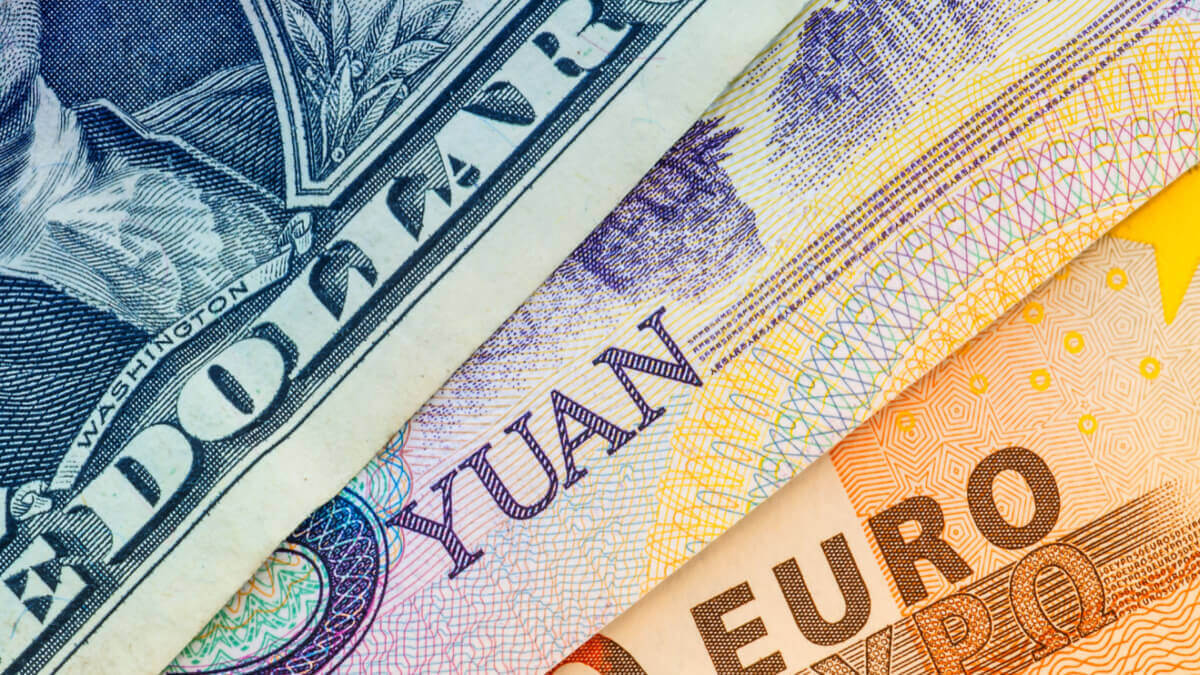Orange Money international money transfer guide [2024]
Everything you need to know about sending money abroad with Orange.

Fiat money is currency that holds no intrinsic value, as it’s not backed by anything physical like silver or gold — but has value from the backing of the government that issued it.
If you’re holding several fiat currencies, it can be difficult to move your money around.
A free Wise account can make things easy, allow you to hold more than 50 currencies all in one place.
The term ‘fiat’ comes from Latin, which means “let it be done” or “it shall be done”.
Ultimately, the fiat money has value because the government says it does — there is no physical backing behind them.
So, when we say a currency backed by the government itself, that’s fiat money.
It means that a currency’s value is based on faith from lenders and investors that the government will repay its debts.
| Pros | Cons |
|---|---|
|
|
Fiat currencies allow governments to utilize the power of their central bank to protect their economies from both highs and lows within business cycles. The amount of currency isn’t fixed, as central banks control the supply.
This gives it power to manage things like liquidity, interest rates, credit, and more.
Also, fiat money makes a solid currency as it handles everything a nation needs to create monetary units. It holds value, is easy to exchange, and the currency is countable. Plus, it’s cost-efficient to produce the currency — known as seigniorage.
On the other side, fiat currency can be volatile.
The Subprime Mortgage Crisis of 2007 showed that the central bank can’t always control everything needed to fully protect the economy.
This volatility can cause both inflation and bubbles in the economy.
Paper currency is the most common form of fiat currency in the world and is the best example to show what fiat currency is and how it works. The US Dollar, Euro, British Pound, and Chinese Yuan are all fiat currencies.
Yes! US dollars — like most fiat money — act as both legal tender and as fiat currency. Any currency declared legal by a governing body is legal tender. But first, the government must issue a currency as a standard for the legal tender. On all US dollar notes, it reads, “This note is legal tender for all debts public and private.”
To back the money, the US Federal Reserve — by law — holds a collateral equal to the value of all US dollars in circulation. It accomplishes this by issuing government debt in the form of treasury bonds, notes, and bills.
People have used paper money in the United States since colonial times. The bills acted as a form of credit that individuals could use to pay for goods, services, and their taxes. In these situations, the paper money was backed by a commodity — mostly gold, and sometimes silver.
But throughout the 18th, 19th, and early 20th century, there were issues with this form of monetary backing. State governments and the national government often printed too many notes, causing depreciation, and the commodity prices backing the notes would fluctuate in value. It was a fickle system.
To correct things, the US government passed laws and made agreements throughout the first half of the 1900s. The Emergency Banking Act of 1933 stopped citizens from exchanging currency for government gold.¹ And the Bretton Woods Agreement in 1944 set a global standard for gold at $35 for one troy ounce of gold.²
But by 1971, the US had declining gold reserves. To fix the issue, President Richard Nixon moved the US off the gold standard and discontinued issuing gold to foreign governments in exchange for US dollars.³ Instead, the government would issue a fiat currency backed by the government itself.
This style of monetary backing is still in use today.
Commodity money has a much longer history than fiat money. It’s money that has value derived from the actual substance of the money or its use. Precious metals, salt, tobacco, barley, cocoa beans, and many other items have been used as commodity currencies in the past.
Because of its usability, commodity money is less prone to inflation because governments can’t create more of a commodity. This also makes commodity money less susceptible to artificial influence, as a government can’t hold a total monopoly over a resource.
But unlike fiat currency, commodity money can have variations in the quality of the money — i.e. a lower-grade metal or crop. And it has a much slower economic growth rate.
With fiat currencies, governments can create more money to inject into the supply to boost economic growth. While too much of this practice leads to over inflation, just the right amount helps the economy grow in the long term.
Representative money is like commodity money in that it’s backed by a physical commodity like gold, silver, or other precious metals. But instead of trading the actual commodity, people trade government-produced notes backed by the commodity. The note represents the value of the commodity.
This is the type of monetary system the US used up until 1971 and has the same issues as that of commodity money. It has more stability and is difficult to artificially influence. But it has a slower economic growth rate and commodities can perish over time.
Fiat currency keeps the government from having to store large amounts of gold and silver and gives people more purchasing power based on the strength of the government itself.
Remember that fiat currency has no value in and of itself. Its value derives from the stability of the government backing the currency — and its economy. Since 1971, when the US moved away from the gold standard, fiat has been the currency standard around the world.
And if you have fiat currencies you’d like to transfer, try Wise. With a Wise account, you can store multiple currencies in one place and transfer them anywhere you want at a cheaper rate than old-school banks.
All sources checked on 30 May 2022
*Please see terms of use and product availability for your region or visit Wise fees and pricing for the most up to date pricing and fee information.
This publication is provided for general information purposes and does not constitute legal, tax or other professional advice from Wise Payments Limited or its subsidiaries and its affiliates, and it is not intended as a substitute for obtaining advice from a financial advisor or any other professional.
We make no representations, warranties or guarantees, whether expressed or implied, that the content in the publication is accurate, complete or up to date.

Everything you need to know about sending money abroad with Orange.

What is Ria and how does it work?

Your full guide to international Amscot wire transfers.

Your full guide to M-Pesa international transfers.

Your complete guide to Pangea Money Transfer safety

Your guide to understanding and avoiding wire transfer scams